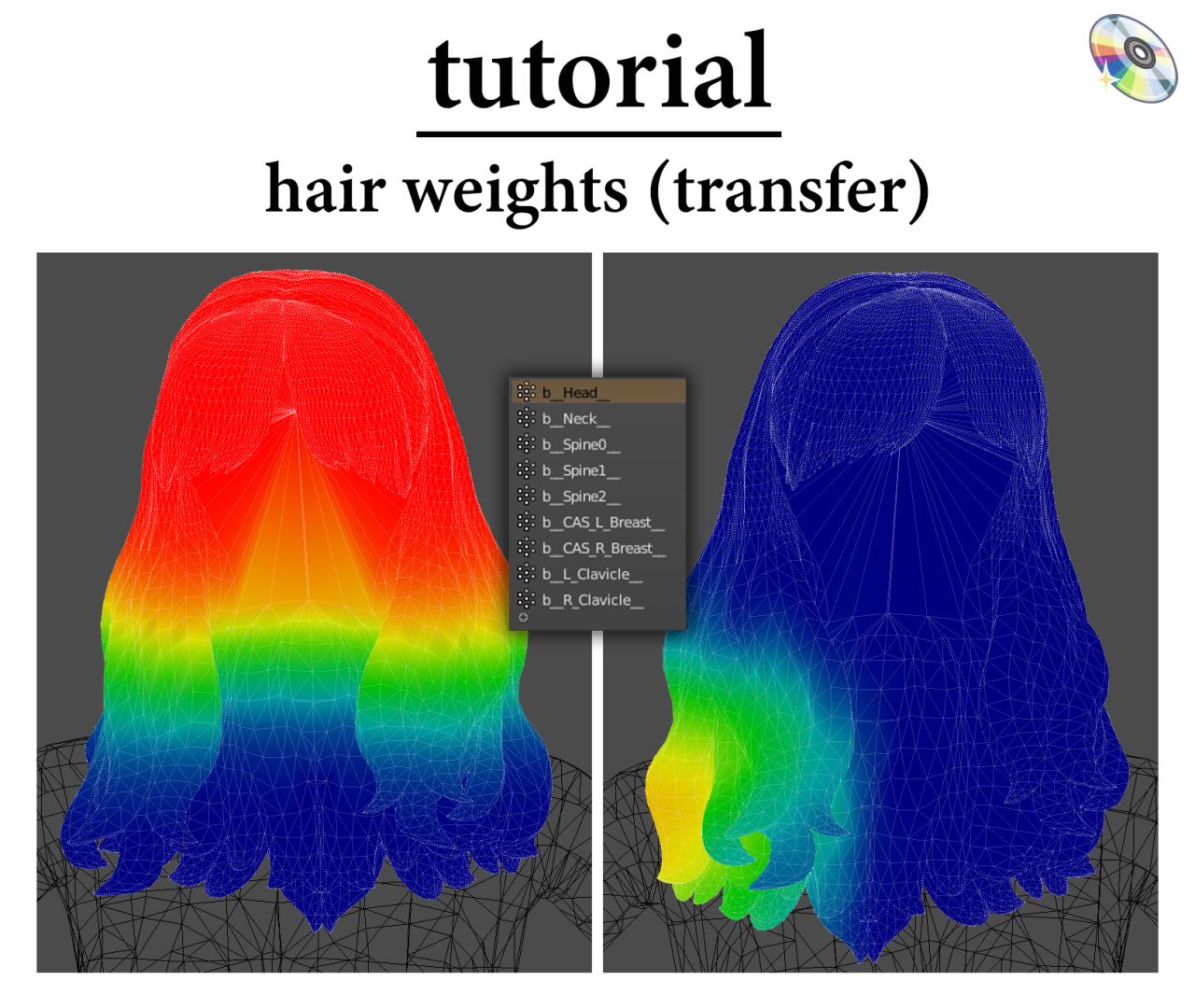
Tutorial – Hair Weights:
As requested, I’ll be going over how I learnt to do weights for hairs ! I would like to mention that@qicc taught me this method so all credit goes to him, he’s a true king! எனவே, without further ado, let’s begin
* Recommend that you read via Dashboard as opening the images on my theme does not work *
Step 1:
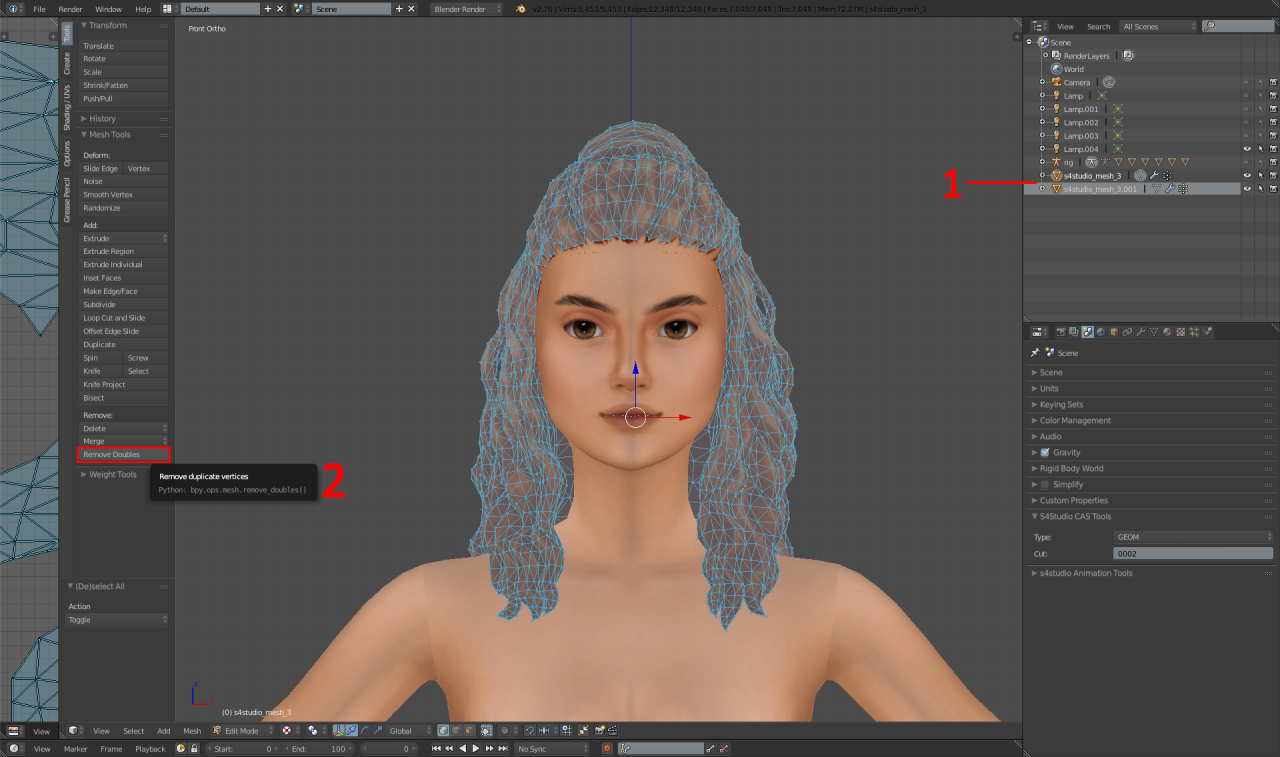
1 – separate the hair and the hairline by using link selection (L) and hovering your cursor over the hairline. Then, press P on your keyboard to separate to a new layer.
2 – Then, with the main hair highlighted, as pictured, click ‘remove doubles’.
Step 2:
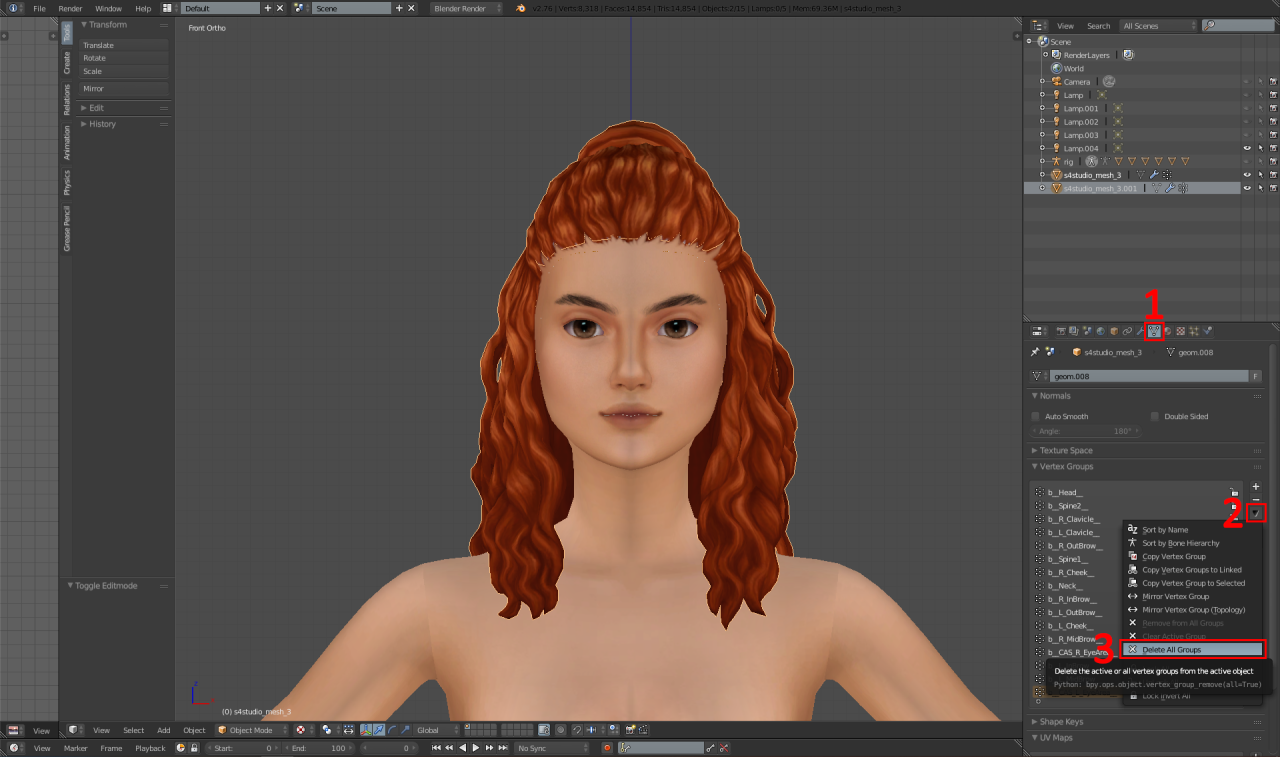
1 – Navigate to the ‘data’ tab.
2 – Click the arrow.
3 – Click ‘delete all groups’.
Step 3:
Save the blender file. Then, open Blender v2.8+ and navigate to: File – Open, and open the package we just saved.
Step 4:

Once you’ve opened this file, you can delete the hairline.
1 – Click this.
2 – Click this.
Then, append this file.
Step 4.5:
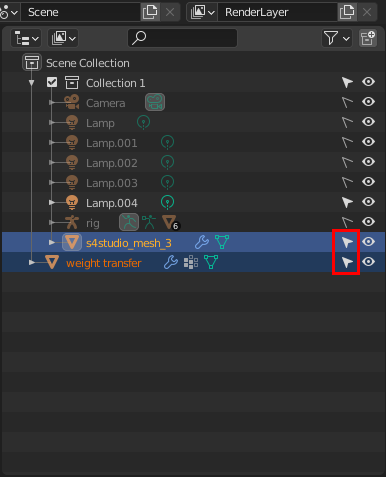
Make sure both meshes have this little cursor highlighted as pictured.
Then, A VERY IMPORTANT STEP – left clickYOURmesh, then, HOLD SHIFT and left click the ‘weight transfer’ mesh.
Step 5:
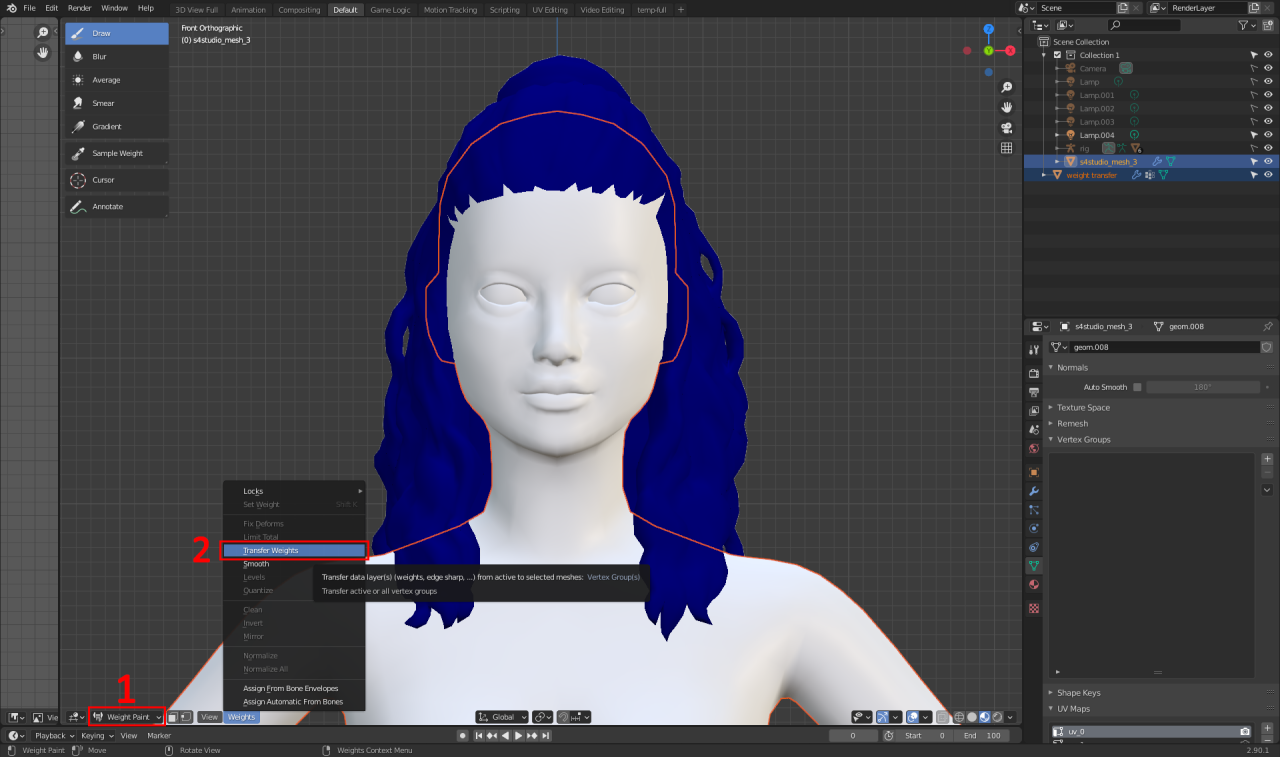
1 – Change mode from ‘object mode’ to ‘weight paint’.
2 – Click this little ‘weights’ button and hit ‘transfer weights’
Step 5.5:
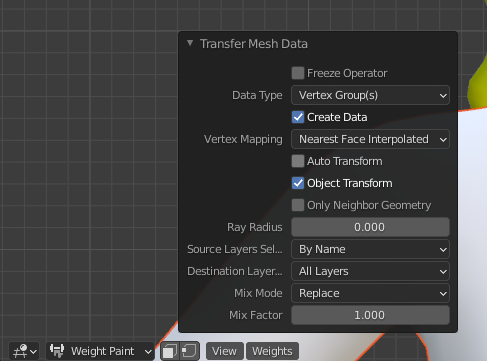
Click the ‘transfer Mesh Data’ button and set the settings to match these.
Step 6:

Click the ‘weights’ button again, then click ‘smooth’.
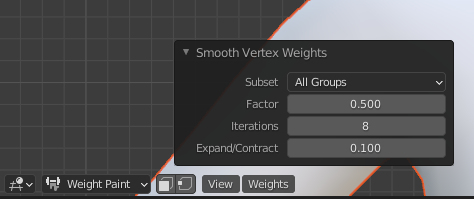
Set the ‘smooth’ settings to these.
(Take these settings as a general guide, depending on the hair and its length the iteration may vary)
Step 7:
Save your package and re-open the saved ‘deleted weights’ file.
Deleted the broken weights hair mesh, and append the newly finished weights.
Step 8:
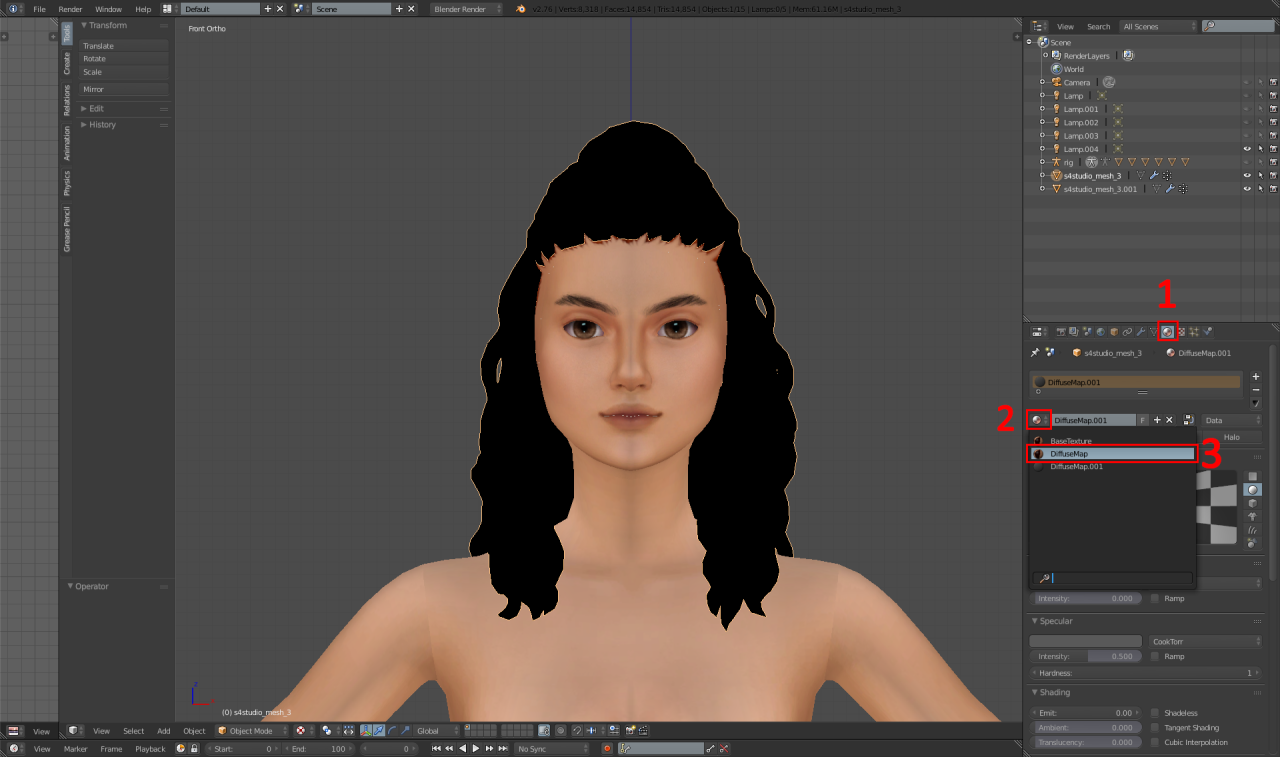
Your hair will mostly look like this when you import it. எனவே, to fix it, jus click these three buttons in order.
Step 9:
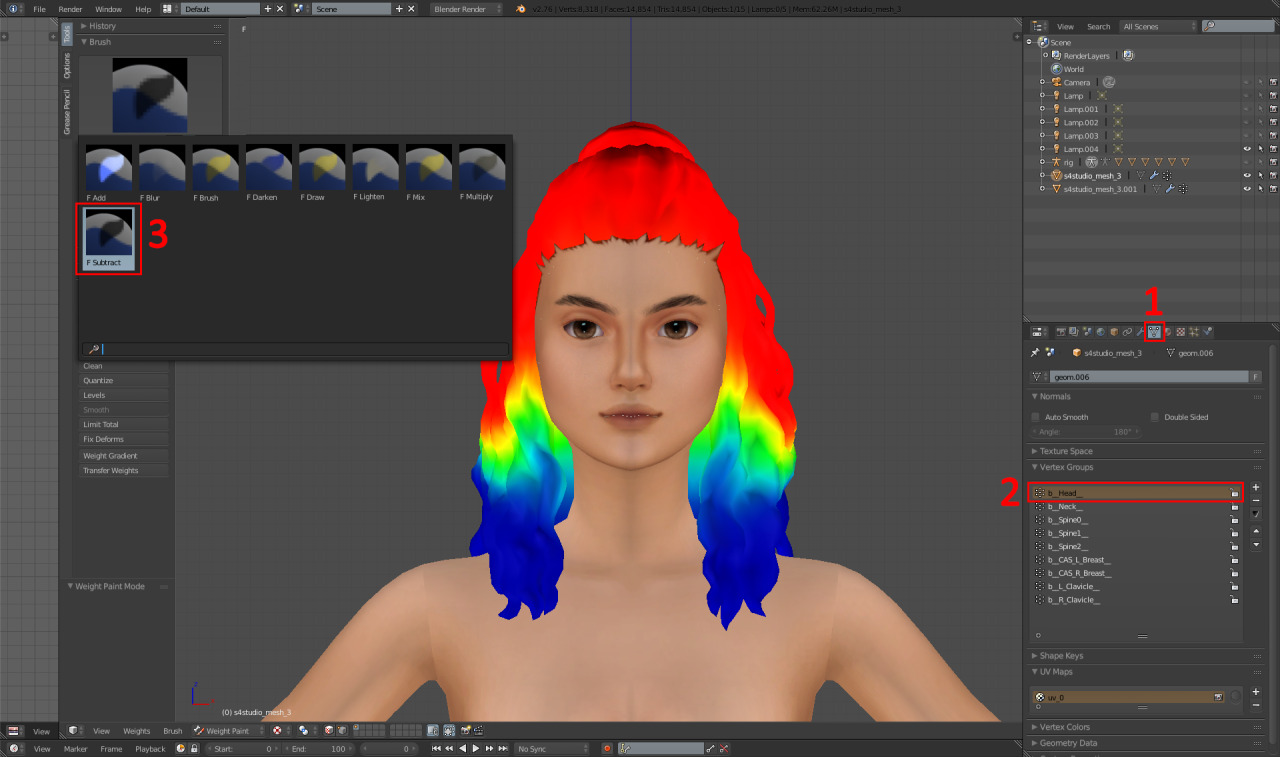
Now, we need to fix the head weight because the transfer messes that one up lol.
1 – Click this.
2 – Click “b__Head__”.
3 – Go to the brushes and click the ‘subtract’ brush.
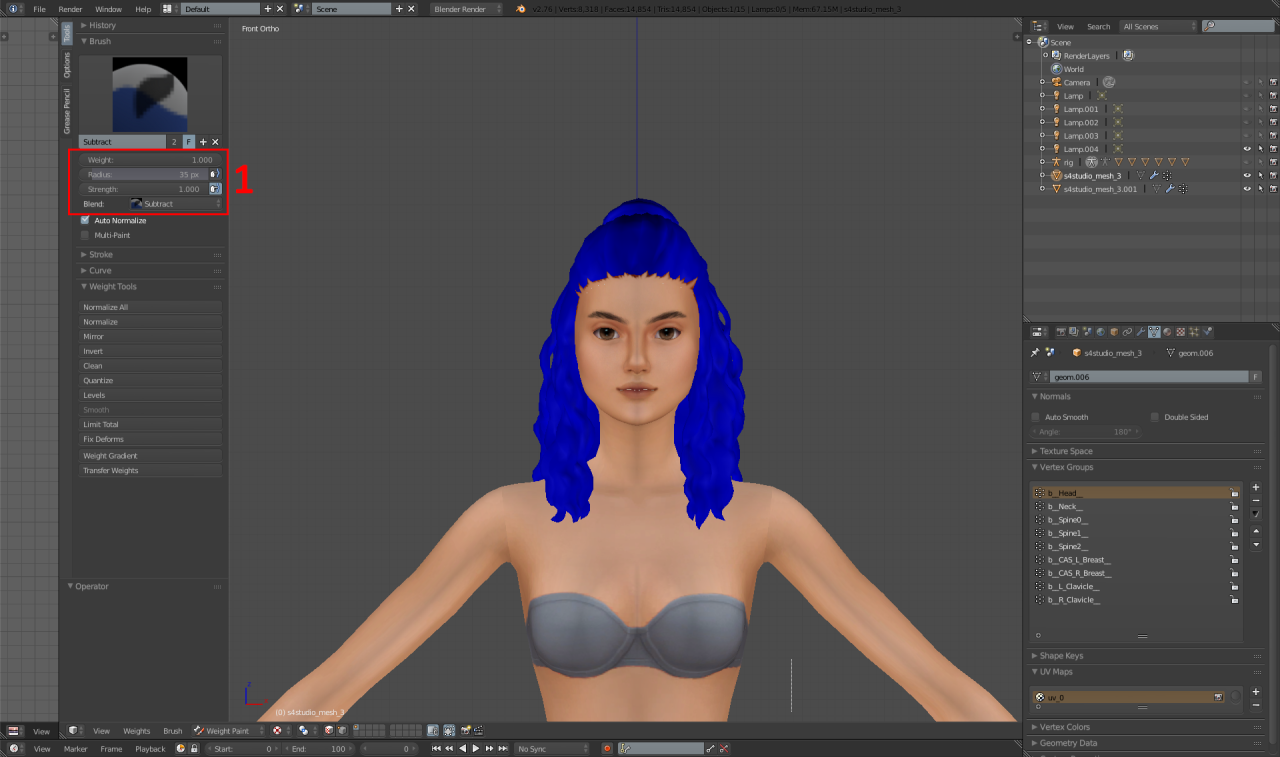
1 – Then, using these settings, use the ‘weight gradient’ button and drag downwards in the armpit area so the ENTIRE mesh turns blue like so.
Step 10:
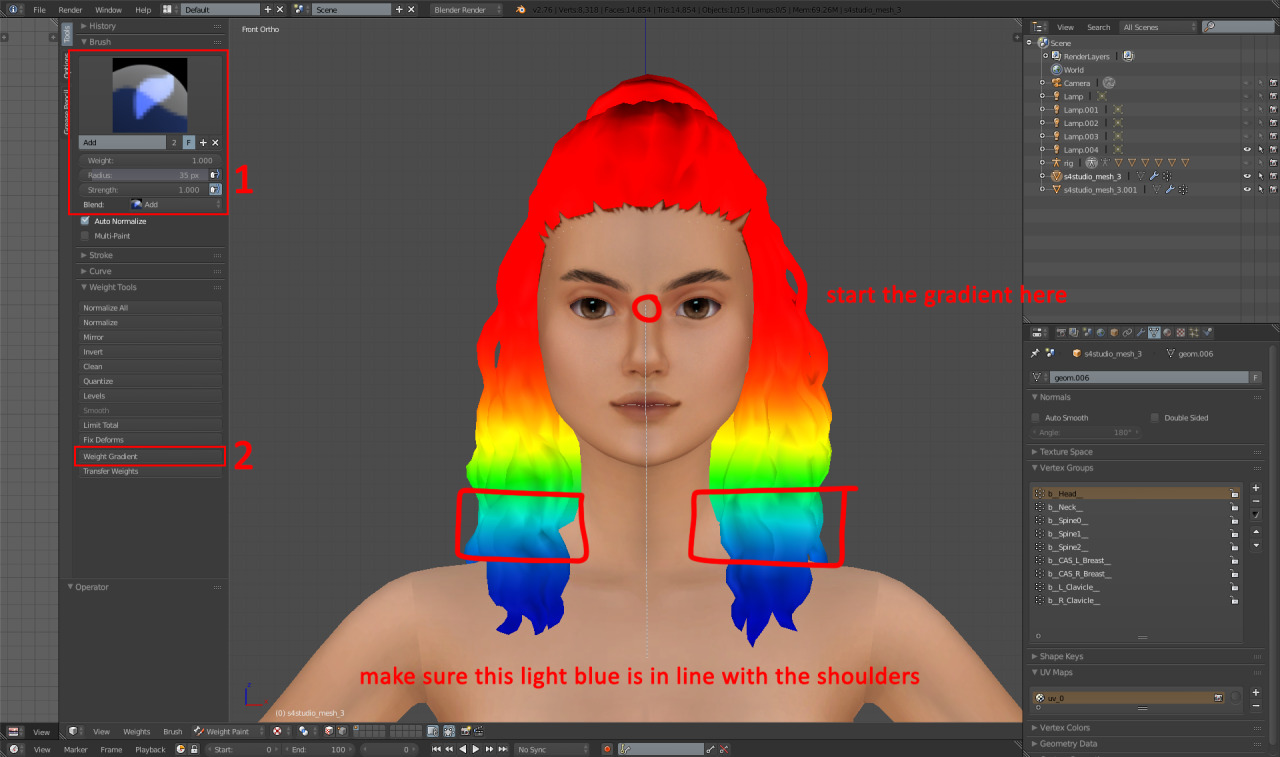
Now we need to do the weight gradient for the head weight.
1 – Change the brush to ‘add’ and put it at those settings.
2 – Click ‘weight gradient’.
3 – Drag the gradient downwards, as seen in the photo.
Step 11:

1 – Click this.
2 – Click this.
(When clicking the ‘normalise all’, make sure you are on the “b__Head__” weight.)
Done!
After that, re-join the hairline to the mesh, duplicate the mesh two times and order the cuts as 0000, 0001 and 0002, then save and import back to s4s!
Disclaimer– the clavicle weights may become an issue with very long hairs and as a result cause clipping or mesh tearing. If this is an issue, obviously then forget about clavicle weights.
If you have any issues or confusion about this, please shoot me a DM and I’ll happily help you out!

